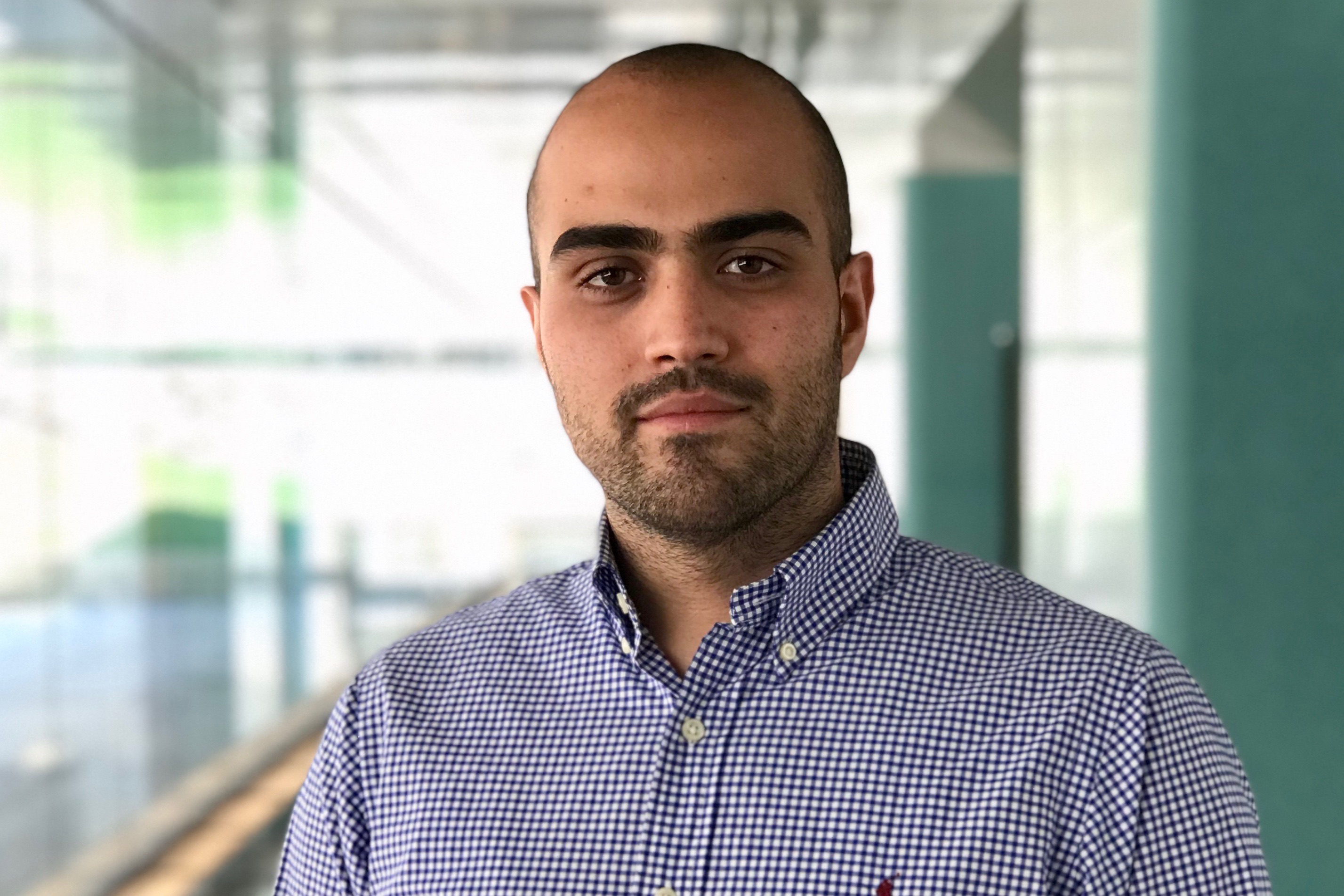Milad Zolfagharloo Koohi receives IEEE MTT-S Fellowship to advance 5G communications
EECS-ECE PhD student Milad Zolfagharloo Koohi is working to make smartphones faster and smaller through his research in the field of RF devices.

 Enlarge
Enlarge
5th year PhD student Milad Zolfagharloo Koohi has been awarded the IEEE Microwave Theory and Techniques Society Graduate Fellowship for his work on agile radio frequency (RF) technologies that enable 5G and beyond.
The global fellowship is given to ten students every year. The awardees must be in the field of microwave technology and have a history of academic excellence in both coursework and research publications.
Koohi works on RF acoustic wave devices. These devices transformed communication circuits and allowed cell phones to become smaller and faster. Koohi and his team are looking to advance RF acoustic devices and usher in a new era of communication.
“By employing multifunctional ferroelectric materials, we are trying to make RF acoustic circuits more efficient, more functional, and smaller, laying the ground for the upcoming 5G technology and allowing the next generation of communication devices to be much faster and cheaper,” Koohi said.
To advance RF technology, Koohi designs, simulates, fabricates, and measures a new class of reconfigurable RF acoustic devices himself that are only tens of micrometers – or the width of a human hair. As such, he spends a lot of time in the Lurie Nanofabrication Facility.
“One of the most exciting things is that you can come up with an idea and go into the cleanroom, fabricate the idea, and then measure it,” Koohi said. “I think Michigan has one of the best microfabrication facilities in the U.S., and it’s great to see your idea become a reality.”
I think Michigan has one of the best microfabrication facilities in the U.S., and it’s great to see your idea become a reality.
Milad Zolfagharloo Koohi, 5th year PhD
Koohi’s specialty is reconfigurable bulk acoustic wave filters. Acoustic filters determine the operating frequency of a communication device. Current filter banks in mobile devices require external switchplexers to select the desired frequency band. The addition of switches adds cost and complexity to the RF modules in mobile devices. Koohi pioneered a way to eliminate the external switches, helping to optimize the design of the communication circuits.
Koohi completed his undergraduate study at the University of Tehran, and he came to U-M due to the quality of the research in applied electromagnetics and RF circuits.
“I enjoy the environment, the people,” Koohi said. “The community itself provides competition and competition drives progress. That’s something that you can’t find everywhere.”
Koohi is advised by Prof. Amir Mortazawi, and he works in the Radiation Laboratory (Radlab).
 MENU
MENU 
